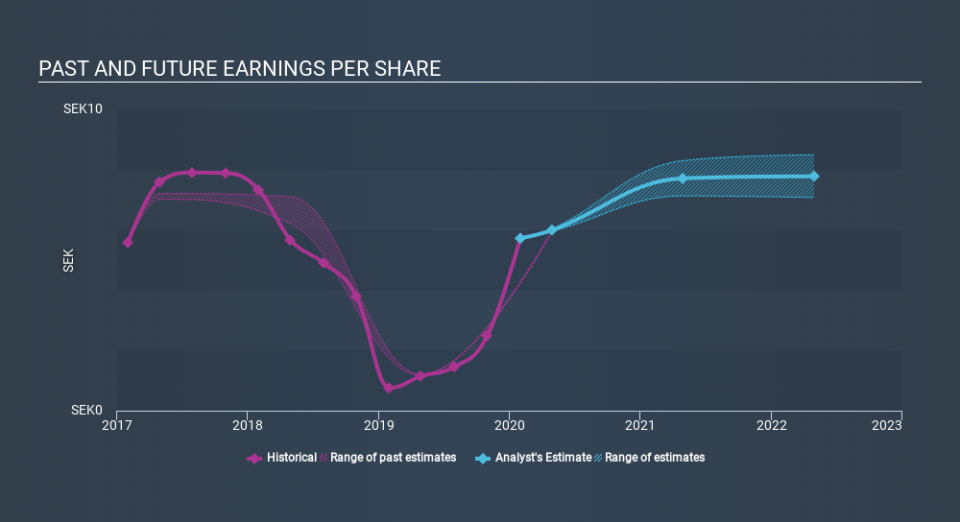The Clas Ohlson (STO:CLAS B) Share Price Is Down 52% So Some Shareholders Are Wishing They Sold

For many, the main point of investing is to generate higher returns than the overall market. But the main game is to find enough winners to more than offset the losers So we wouldn't blame long term Clas Ohlson AB (publ) (STO:CLAS B) shareholders for doubting their decision to hold, with the stock down 52% over a half decade. Furthermore, it's down 40% in about a quarter. That's not much fun for holders. Of course, this share price action may well have been influenced by the 23% decline in the broader market, throughout the period.
Check out our latest analysis for Clas Ohlson
While the efficient markets hypothesis continues to be taught by some, it has been proven that markets are over-reactive dynamic systems, and investors are not always rational. One way to examine how market sentiment has changed over time is to look at the interaction between a company's share price and its earnings per share (EPS).
During the five years over which the share price declined, Clas Ohlson's earnings per share (EPS) dropped by 4.4% each year. This reduction in EPS is less than the 14% annual reduction in the share price. This implies that the market was previously too optimistic about the stock. The low P/E ratio of 11.88 further reflects this reticence.
You can see how EPS has changed over time in the image below (click on the chart to see the exact values).
We like that insiders have been buying shares in the last twelve months. Even so, future earnings will be far more important to whether current shareholders make money. This free interactive report on Clas Ohlson's earnings, revenue and cash flow is a great place to start, if you want to investigate the stock further.
What About Dividends?
As well as measuring the share price return, investors should also consider the total shareholder return (TSR). The TSR incorporates the value of any spin-offs or discounted capital raisings, along with any dividends, based on the assumption that the dividends are reinvested. It's fair to say that the TSR gives a more complete picture for stocks that pay a dividend. In the case of Clas Ohlson, it has a TSR of -38% for the last 5 years. That exceeds its share price return that we previously mentioned. This is largely a result of its dividend payments!
A Different Perspective
It's good to see that Clas Ohlson has rewarded shareholders with a total shareholder return of 0.8% in the last twelve months. And that does include the dividend. There's no doubt those recent returns are much better than the TSR loss of 9.1% per year over five years. The long term loss makes us cautious, but the short term TSR gain certainly hints at a brighter future. I find it very interesting to look at share price over the long term as a proxy for business performance. But to truly gain insight, we need to consider other information, too. Even so, be aware that Clas Ohlson is showing 3 warning signs in our investment analysis , you should know about...
If you like to buy stocks alongside management, then you might just love this free list of companies. (Hint: insiders have been buying them).
Please note, the market returns quoted in this article reflect the market weighted average returns of stocks that currently trade on SE exchanges.
If you spot an error that warrants correction, please contact the editor at editorial-team@simplywallst.com. This article by Simply Wall St is general in nature. It does not constitute a recommendation to buy or sell any stock, and does not take account of your objectives, or your financial situation. Simply Wall St has no position in the stocks mentioned.
We aim to bring you long-term focused research analysis driven by fundamental data. Note that our analysis may not factor in the latest price-sensitive company announcements or qualitative material. Thank you for reading.

 Yahoo News
Yahoo News 

